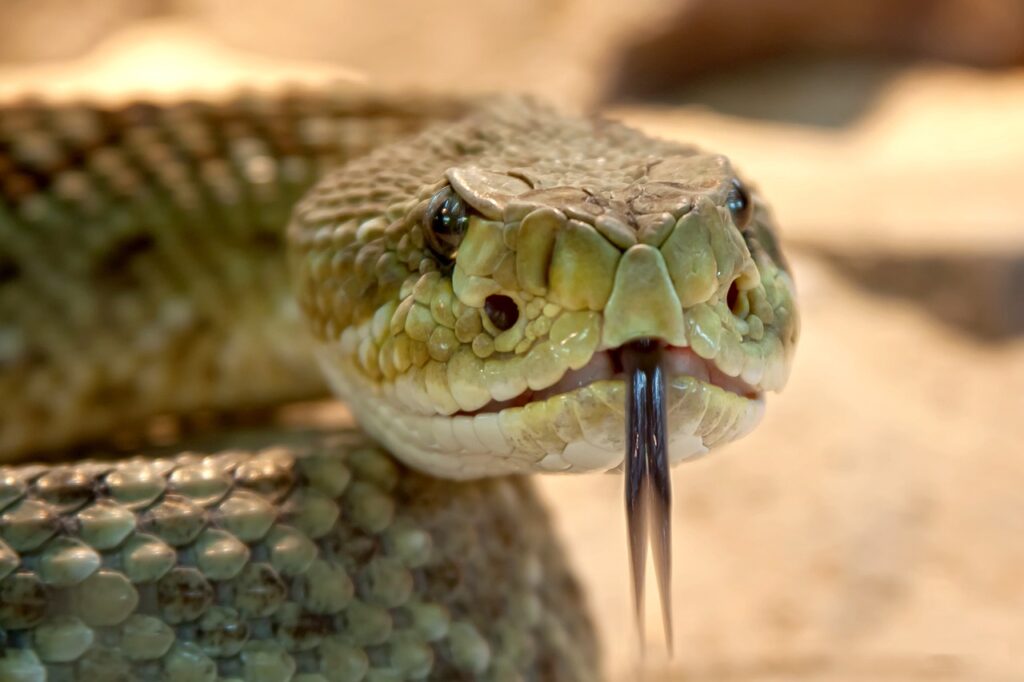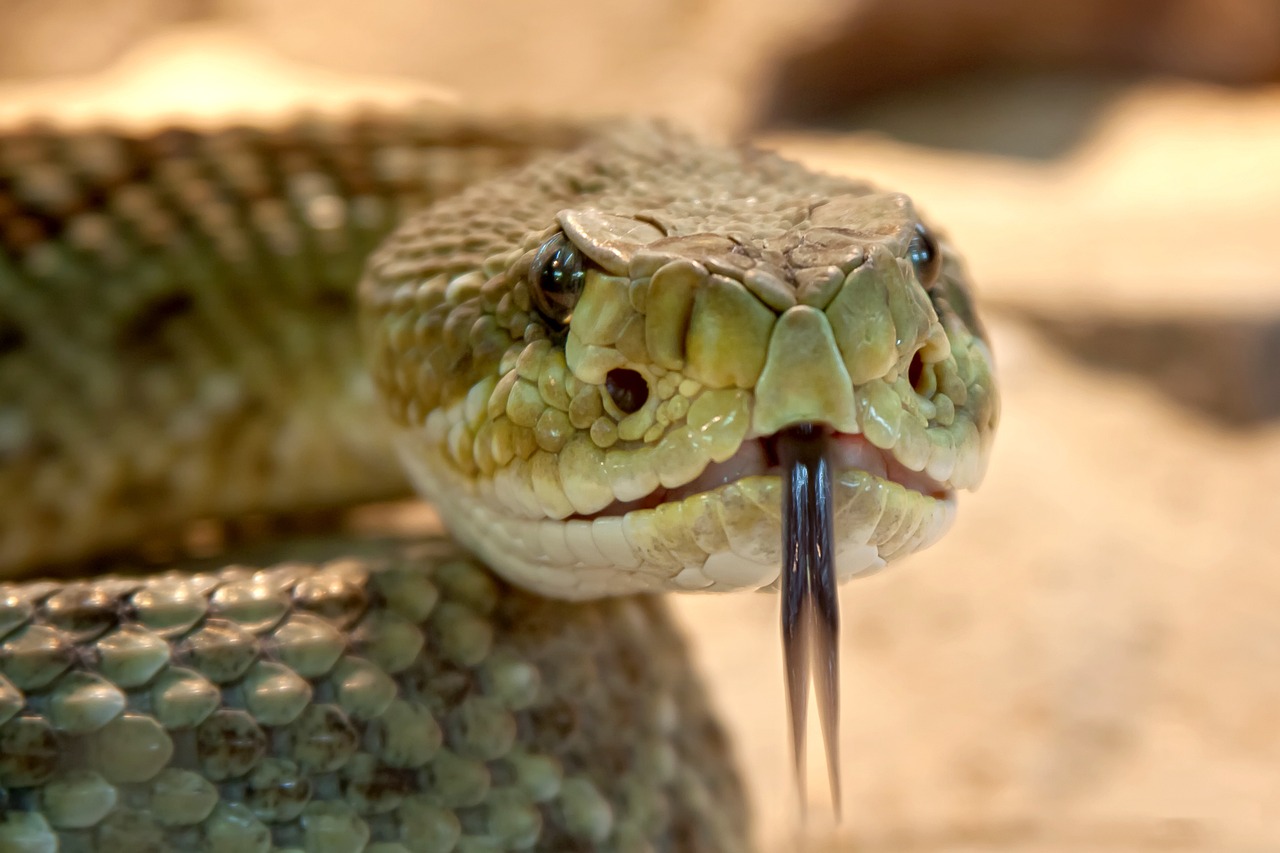
Snakes, ancient inhabitants of our planet, have adeptly evolved to survive diverse global environments for millions of years. Regardless of the range of emotions they evoke, the crucial role snakes play within their ecosystems is undeniable. They assist in controlling rodent populations, functioning as both predator and prey within the intricate web of life. While much remains unknown about these fascinating creatures, you’ve come to the right place if you’re seeking intriguing snake facts. Here’s a compilation of captivating insights about snakes:
Fun Facts About Snakes
- Egg-Laying Variability Did you know? Only 70% of snakes lay eggs, as revealed by World Animal Protection. Snakes residing in colder climates opt for live births as their eggs cannot endure such conditions.
- Tongue-Based Smell Perception Snakes utilize their Jacobson’s organ located in the roof of their mouth to perceive smells, despite having nostrils.
- Remarkable Dietary Capacity Thanks to their highly flexible lower jaws, snakes can consume prey that’s 75% to 100% larger than their own head size.
- Rib-Rich Anatomy Snakes possess numerous ribs that offer organ protection.
- Eye Uniqueness Unlike humans, snakes lack eyelids and must sleep with their eyes open due to their inability to blink.
Facts about Sea Snakes
- Venomous Marine Residents Every sea snake harbors venomous traits, sporting specialized venom glands and front-mouth fangs.
- Rich Diversity With over 60 species encompassing diverse genera like Hydrophis, Aipysurus, and Laticauda, sea snakes showcase substantial variety.
- Adept Marine Adaptations Flat, paddle-like tails endow sea snakes with exceptional swimming abilities, enabling graceful movement through oceanic realms.
- Salt Regulation Specialized salt glands adjacent to their tongues aid sea snakes in expelling excess salt absorbed during consumption of saltwater prey.
- Carnivorous Nature Sea snakes predominantly feed on fish, as well as other marine creatures like eels and small crustaceans.
Facts about Corn Snakes
- Vibrant Variety Corn snakes exhibit a spectrum of colors and patterns, making them popular within the pet trade.
- Serene Disposition Renowned for their calm temperament, corn snakes generally exhibit docile behavior.
- Lifespan Limits Typically, corn snakes live for 6 to 8 years; however, proper care in captivity can extend their lifespan to 15 to 20 years or more.
- Hibernation Habits While not true hibernators, corn snakes undergo a period known as brumation during colder months.
- Nocturnal Habits Primarily nocturnal, corn snakes are most active during nighttime hours.
Facts about Anaconda Snakes
- Aquatic Proficiency Anacondas excel as swimmers, predominantly inhabiting rivers, streams, and swamps in search of prey.
- Carnivorous Preferences Feeding on a range of animals including fish, birds, reptiles, and mammals, anacondas are carnivorous by nature.
- Tropical Dwellings Native to South American tropical rainforests and swamps, anacondas inhabit regions such as Brazil, Venezuela, Colombia, and parts of the Guianas.
- Size Matters The Green Anaconda claims the title of the largest species, with females reaching up to 20-30 feet and males measuring around 10-15 feet.
- Reluctant Aggression Anacondas typically avoid confrontation with humans and are only aggressive when provoked.
Facts about Garter Snakes
- Petite Proportions Garter snakes are relatively small, measuring 18 to 26 inches in length.
- Habitat Diversity Adaptable to various settings such as grasslands, forests, wetlands, and suburban areas, garter snakes thrive across North America from Canada to Central America.
- Daylight Activity Garter snakes are diurnal creatures, primarily active during the day. They showcase prowess in both climbing and swimming.
- Harmless Nature Non-venomous and harmless to humans, garter snakes pose minimal threats.
- Defensive Musk Release Garter snakes have a defense mechanism involving the release of foul-smelling musk from their anal glands when threatened.
Facts about Black Mamba Snakes
- Sub-Saharan Residences Black mambas predominantly inhabit sub-Saharan Africa, including countries like South Africa, Namibia, Mozambique, and Zimbabwe.
- Impressive Length These snakes rank among the world’s longest venomous species, measuring 8 to 14 feet.
- Color Contrasts Despite their name, black mambas vary in color from grey to dark brown, featuring a lighter underside.
- Venomous Potential The highly toxic venom of black mambas attacks the nervous system, potentially causing paralysis and death without timely treatment.
- Speedy Agility Black mambas are agile and swift, reaching speeds of up to 12.5 miles per hour over short distances.
Intriguing, isn’t it? These diverse snake species possess an array of captivating characteristics that enrich our understanding of these enigmatic creatures.










